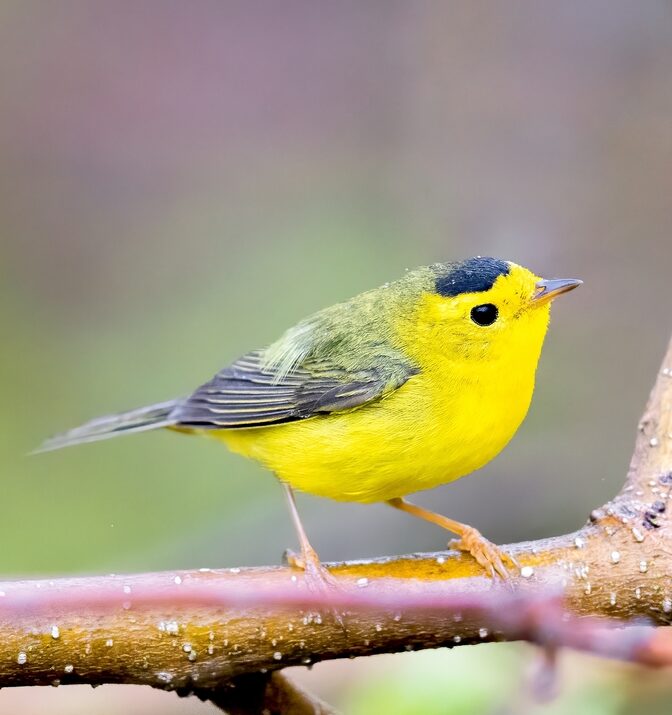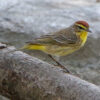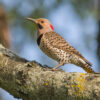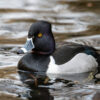Wilson’s Warbler, Cardellina pusilla
Bill Rowe
Getting to all the warblers, sooner or later, is one of the ongoing challenges of this series, with so many regular species here (36). So let’s move forward with Wilson’s Warbler, an engaging little bird that is usually easy to identify and also easy to watch, as it stays mostly at lower and mid-levels in trees and shrubs—although it is even more active than most warblers, constantly hopping about and flitting its tail like a gnatcatcher. Out of all the warblers in the United States, many are seen mainly in the east while certain others are strictly western birds; just a few are found basically nationwide, and Wilson’s is one of these. Here in the Midwest, we see it only as a migrant, heading north in spring to the boreal forest of Canada and then south in the fall to Middle America, with some hanging out through the winter in south Texas and the Gulf coast. If you head west for summer vacation, however, you may be surprised to find Wilson’s Warblers as nesting birds in willow thickets around high-altitude lakes in the Rockies, or in streamside habitats in the Sierras and coastal hills of California. The bird’s namesake, Alexander Wilson, was a Scotsman who came to America in 1794 and eventually wrote and illustrated a multi-volume American Ornithology, the first major work on our birds. He was the first to describe this warbler.
IDENTIFICATION: A male Wilson’s Warbler wears a simple color pattern, all yellow below and plain olive-green on the back, with a black “skullcap” that identifies it quickly. The female is similar but with a more variable, often less-black cap; in the fall, young females may have only olive-green on their crowns. In all plumages, Wilson’s shows a beady black eye against a blank face, and its tiny bill and long tail give a much different impression than a Yellow Warbler, which also has much yellow edging on the wing feathers. A fall female Hooded Warbler (scarce here) has similar plumage but is larger with white in its tail. Wilson’s call note is a distinctive jimp, and in spring the song is a chatter or slow trill that changes pitch toward the end.
ST. LOUIS STATUS: Common in May and again in August and September; likely to be seen in any woodland edge or shrubby thicket, including stands of willow.
Learn more and listen to the songs and calls of Wilson’s Warblers here.
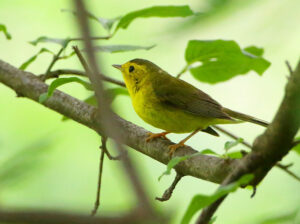
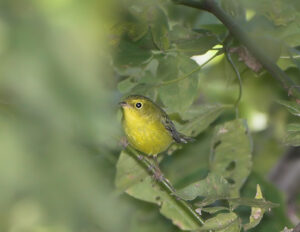
Adult female
Photo Credit: Al Smith
Immature female in fall; note that eyering sometimes shows up well.
Photo Credit: Al Smith

